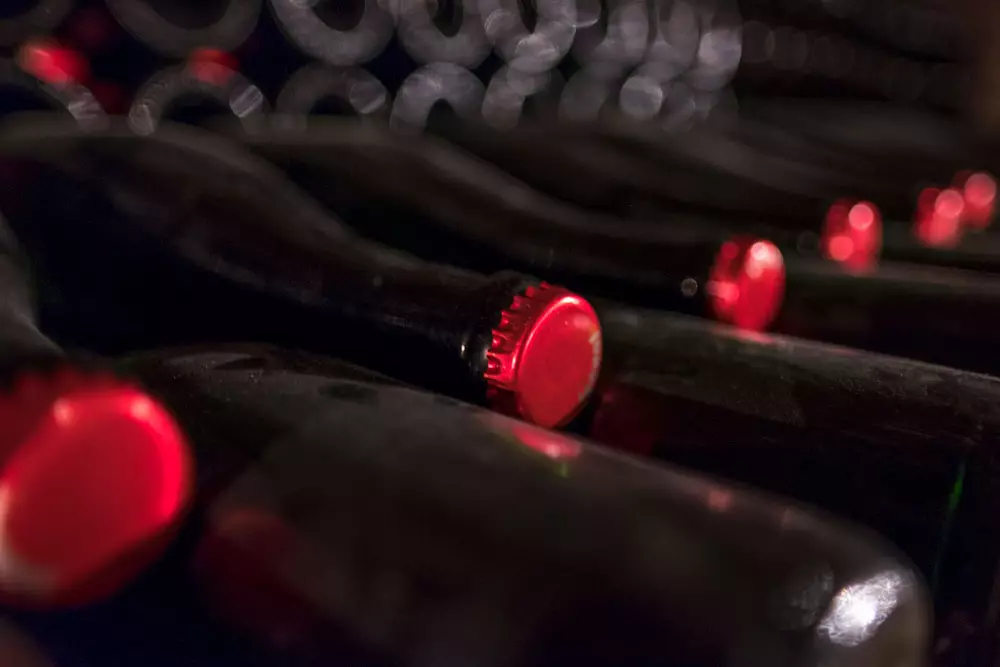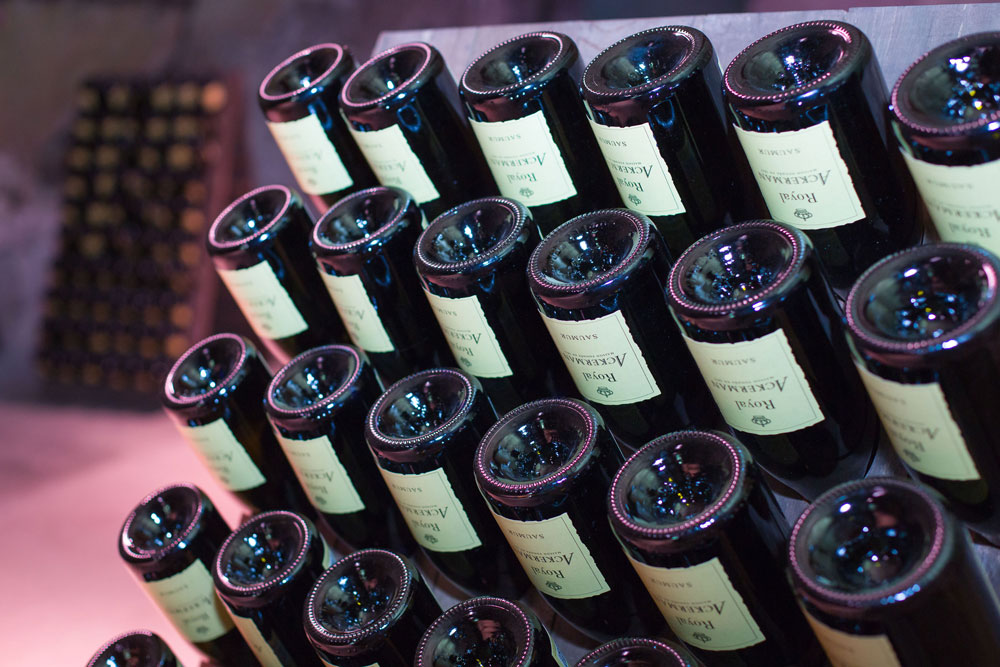Winemaking
Steps to create a fine sparkling wine
Vous êtes ici : Accueil » Vineyards and the Loire » Winemaking

The production of Maison Ackerman sparkling wines

A unique terroir
Jean Baptiste Ackerman decided to found Maison Ackerman in the region of Saumur at the beginning of the 19th century as it was renowned for its terroir that was capable of producing wines of a high standard of quality.
The notion of terroir is very much linked to the geological nature of the soils and sub-soils. It is the fruition of a complex balance of elements, including the climate, grape varieties, and human intervention.
The soils of the region of Saumur are essentially made up of tuffeau limestone. Moreover, Maison Ackerman’s troglodyte caves are dug out of this rock. Some vineyards are even planted just above these!
Traditional wines vinification
Traditional winemaking is undertaken with all of Maison Ackerman’s art and expertise.
We provide you with fine sparkling wines boasting unequalled diversity in terms of blending. As a result, we provide the best showcase of fine Loire Valley sparkling wines, from the simplest through to the most sophisticated styles.
The wines are chiefly derived from our vineyard, Les Dames de la Vallée, the vine-growing of which, is exclusively adapted to the requirements of refined sparkling wines – rare for the region. We draw the best from our varieties (Chenin, Chardonnay and Cabernet Franc), by focusing on freshness, aromas and balance, in view of offering sparkling wines that can be appreciated by everybody. In this case, the expedition liqueur’s role is that of highlighting the complexity of the blend without distorting the expression of the terroir.

Vine-growing, harvesting and pressing
Professional and authentic alike, Maison Ackerman has been promoting its expertise since 1811. Our wines are made all year round by our winemaking team. We monitor the fruit used to elaborate our base wine, according to AOP production specifications, in view of ensuring a high standard of quality. To start with, our winemakers adapt the vine-growing of our varieties to the soils and climate. They define farming techniques adapted to each parcel (pruning, grassing…) and berry tasting determines the time to harvest.

The first fermentation
Fermentation involves the transformation of the fruit’s sugar content into alcohol under the action of yeast. This phase reveals the wine’s aromas. It is closely monitored by our winemakers: daily tastings, controlled temperatures… After fermentation, the must is transformed into wine. The base wines are then transported into the cellar.

Blending, a crucial step
Most fine sparkling wines are elaborated from a blend of several varieties, but also sometimes from a blend of several vintages. Blending is a key step of winemaking and the final touch when elaborating a wine. “Blending” is a winemaking term that can be defined as the art of blending several wisely dosed wines, in view of obtaining the best complementarity. The freshness of a variety will lighten the strength of another one. The elegance of a wine will reduce the concentration of another one. The cellar master strives to perpetuate the house’s style, that is to say a special taste defining and upholding the brand.

The second fermentation – inside the bottle
After a resting period of a couple of weeks, expedition liqueur (a dose of sugar cane and a dose of yeast) is added to the still wine. This yeast transforms the added sugar into alcohol. As a result, the second fermentation is triggered within the bottle. The CO² obtained from the second fermentation is trapped inside the container. It produces the wine’s bubbles when the bottle is uncorked.
The wine is bottle aged on laths, following this second fermentation, when all of the added sugar has been used by the yeast.

Riddling
Riddling involves rotating the bottles with the neck faced downward in order to move the fermentation’s lees toward the cork. Associated with the méthode traditionnelle, this technique has been mechanized in recent years. At present, gyropalettes can systematically shake and tilt 1,000 bottles at a time, all the while obtaining a standard of quality identical to manual stirring.
Disgorgement
The deposit is then expelled by disgorging (the sediment in the bottle neck is frozen and the ice cube containing the yeast is ejected). This lost volume is replaced by the expedition liqueur. It comprises a quantity of sugar determining the type of sparkling wine: brut, extra brut, dry, semi-dry. The corked and muzzled bottles are left in a vertical position for several months at a constant temperature. They are then ornately decorated with the following: a definitive cork stopper, a wire hood and cap, foil and neck label.
